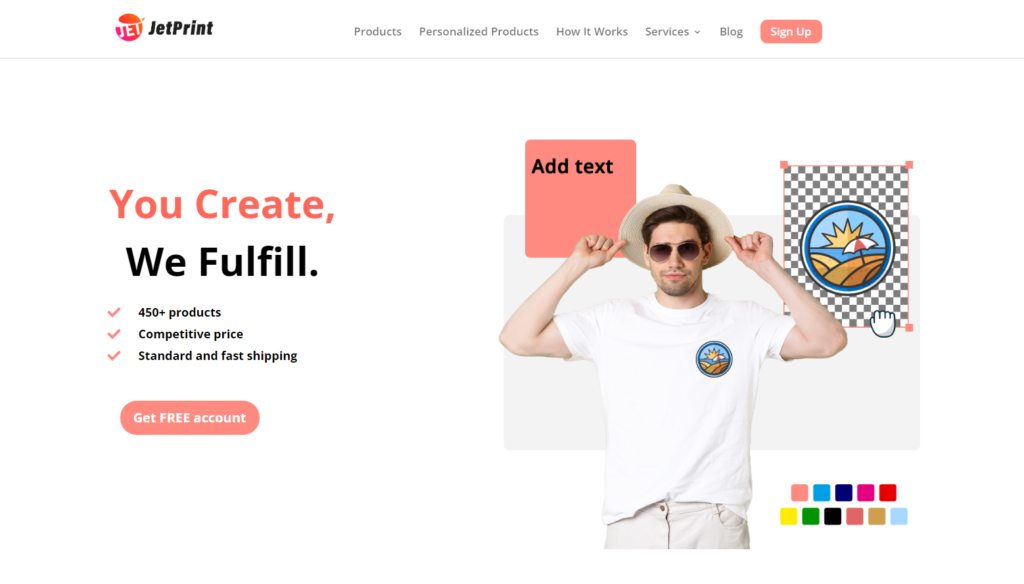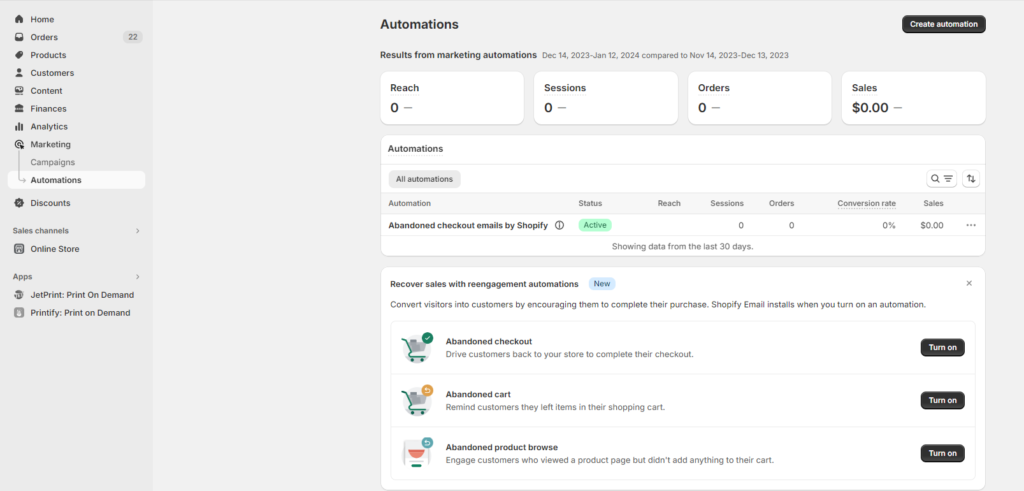Dropshipping offer a low-cost pathway to entrepreneurship, yet foster intense competition. Many pioneers in dropshipping contend with the challenges of this market. While some achieve success, others encounter setbacks.
If you’re about to enter the dropshipping market, these 11 crucial dropshipping tips in this article will help you reduce the hurdles.
1. Research your target market
What is your target product?
What will make you stand out and outperform your competitors?
Who is your target audience?
Before diving headfirst into dropshipping, you need to answer these questions accurately and thoroughly. You’re not simply looking for the hottest selling product on the market because such products often lead to price wars. Similarly, you don’t have to search for blue ocean products, which can be incredibly challenging to find. Instead, focus on niche categories; for example, instead of selling all types of shoes, you might specialize in black leather shoes for men.
Understanding your competitors is crucial. Analyze their pricing, product range, marketing strategies, and customer service. This knowledge will help you differentiate your business and identify opportunities to excel in the market.
Conducting market research in advance will enable you to determine the type of targeted advertising, content, and promotions needed to resonate with potential customers
2. Find reliable suppliers for your products
Products are the core of your e-commerce store, and they come from your suppliers. One of the cornerstones of a successful dropshipping business is establishing partnerships with reliable suppliers.
When looking for suppliers, consider the following factors:
- Is the product category related to your own category?
- Product quality
- Product price
- Delivery speed
- Customer support
Always order a sample from any potential supplier to check the product quality. Don’t let your business suffer because you didn’t test a sample.

JetPrint provides shipping services worldwide and is an excellent choice if you want to sell print-on-demand products. Use the free mockup generator to add features that differentiate your products from competitors. JetPrint integrates with Shopify, Etsy, and WooCommerce, allowing you to automate the order process easily if you use these platforms to create your store.
3. Optimize your store
Why can different stores sell the same product at a higher price? Why do different stores have different conversion rates for the same price? These two questions can be perplexing for those in direct sales and e-commerce, yet they are often overlooked.
Ensuring your website is mobile-friendly is crucial, as over 72% of online shopping occurs via mobile devices. Failure to provide a good mobile experience can result in a significant loss of orders.

A professional and well-optimized website can establish trust and credibility for your brand. Customers are more inclined to purchase from websites that appear trustworthy and legitimate, akin to entering a high-end restaurant with lavish décor that matches its pricing.
Optimizing various website elements, such as product pages, checkout processes, and call-to-action buttons, can enhance conversion rates. It’s essential to understand customer behavior patterns before making decisions, such as determining the location of the payment button.
Additionally, your choice of payment gateway is critical. Utilizing well-known options like Stripe and PayPal can boost buyer confidence, as reputable payment gateways provide assurance against financial loss, a concern no buyer wishes to encounter.
4. Improve store policies
Having a clear return and refund policy, along with privacy protection measures, can help you avoid unnecessary issues like delivery delays, product quality concerns, or fraudulent orders. When unsure how to respond to a customer request, it’s best to refer to your policy, which prevents misunderstandings and disputes.
Think of your store policy as a mutual agreement between you and your buyers. Both parties should adhere to this agreement when addressing issues.
Your store policy also demonstrates your commitment to running your business professionally. It assures buyers that they can return or refund items within the specified timeframe, providing them peace of mind. Without a clear policy, even the products you really want to buy will be daunting.
In the realm of dropshipping, ensure your return and refund policy aligns with your supplier’s guidelines. For instance, if your supplier allows refunds within 15 days of receiving goods, but your policy states 25 days, it could lead to significant losses.
5. Price your products properly
Setting reasonable pricing poses a significant challenge for beginners. A general pricing strategy involves factoring in product costs along with a profit margin to determine the retail price. This includes considering both the product cost and shipping expenses. The typical profit margin for e-commerce falls between 10% and 20%, with 15% often serving as a reliable benchmark to ensure profitability amidst paid advertising.
General pricing strategy:
1. Product cost + product cost * profit margin = retail price.
2. Cost = (product cost and shipping cost); cost + cost * profit margin = retail price
When determining pricing, it’s crucial to not only assess profit margins but also analyze competitors’ pricing strategies. For instance, if a competitor sells an embroidered T-shirt for $65 and the average market price is $68, setting your price at $75 seems unreasonable. Instead, considering a price closer to $67 may align better with market expectations, as a $2 difference falls within buyers’ acceptable range.
Moreover, pricing and profit margins shouldn’t remain static. Given the rapid changes in the market and fluctuating supplier costs and shipping expenses, it’s essential to regularly update prices to maintain competitiveness and profitability.
6. Set up automated email marketing
Automated emails can be used to segment customers based on their purchase history or browsing behavior, allowing you to upsell higher-value items and increase average order value, thus maximizing revenue per customer.

Many customers abandon their shopping carts before completing their purchase. Automated emails can be triggered to remind these customers about their abandoned carts and encourage them to complete their purchase, helping recover potential lost sales.
During the holidays, you can send targeted emails with relevant content, such as special offers, product recommendations, or educational material. This keeps customers engaged with your brand and encourages repeat purchases.
If you use Shopify to create a store, you can easily set up automated emails for your customers through the settings in the shop manager.
7. Keep your social media posts updated
Most people view social media as a tool to showcase their brand, expand influence, and increase sales. However, several often overlooked functions of social media can be equally beneficial.
Regularly updating posts lets your customers know that you’re serious about running your store and remain active. Consider a scenario where you visit a store’s Facebook page and see that the last post was made two years ago; it would likely deter you from purchasing from that store.
Customers frequently use social media for support inquiries. By monitoring comments and likes on your posts, you can gauge product popularity. Additionally, addressing customer questions in the comment section serves as a form of customer service.
You don’t need to manage all social media platforms, which can be exhausting. Instead, focus on a few popular platforms like YouTube, Facebook, Instagram, and TikTok, and include links to these platforms on your store.
8. Automated order fulfillment
Implement an automated order fulfillment system to streamline your operations and minimize errors. In dropshipping, it’s common to face issues with delayed or incorrect orders. While mistakes can happen, an automated order fulfillment system can significantly reduce such errors.
With an automated order system, when a customer purchases a product from your store, the order is automatically sent to your supplier, who will then produce and ship the order. This means you don’t need to be involved in the entire purchase process.
Most dropshipping suppliers now have their own apps that allow you to sync products to your online store. For example, JetPrint offers not only an automated order fulfillment system but also automated payment tools. These tools can automatically process payments at a scheduled time after receiving the order, helping to prevent customer complaints due to missed payments.
9. Keep learning SEO
SEO (search engine optimization) can elevate your website’s position in the search engine results page (SERP), enhancing its visibility to potential customers. Improved rankings lead to increased organic traffic, drawing a consistent flow of visitors to your online store. Unlike paid traffic, this organic traffic is entirely free.
When using dropshipping products, many individuals directly use the product title and description provided by the supplier. For instance, if the supplier offers the title “Women’s Hoodie,” this title will be used as is, resulting in a common occurrence where numerous sellers employ identical product titles and descriptions.
“Women’s Hoodie” represents a short-tail keyword. While this keyword boasts a high search volume, the competition is fierce, making it challenging to secure a high ranking.
To address this, you can leverage tools like Google Ads or SEMrush to identify long-tail keywords within the product title. Long-tail keywords, typically comprising more than three words, While long-tail keywords may not attract as much search volume as short-tail keywords, they offer advantages in terms of achieving higher rankings and attracting more targeted customers.
Related Article: Etsy SEO
10. Fast and professional customer support
88% of customers say that good customer service makes them more likely to buy again.
People have limited patience, and no one likes dealing with robots or slow responses. Excellent customer service can help resolve customer concerns and prevent returns and refunds.

Please set business hours for your store to inform buyers of the best times to contact you.
There are many high-quality platforms available that can help improve customer support efficiency, such as Intercom or Zendesk. These platforms also allow you to create FAQs or tutorial articles, effectively reducing customer doubts about your products and minimizing the risk of overwhelming your customer service team with multiple inquiries.
In addition to email and online chat, consider offering phone support. Phone support provides a more personal touch and can resolve issues more efficiently than text communication alone. Many third-party services can help you set up toll-free numbers and customer service hotlines. Grasshopper and Aircall are excellent options for these tasks.
Start your dropshipping business
By implementing these ten key tips, you can optimize your dropshipping business and reduce mistakes in its operation. There are risks in any business, including dropshipping. While dropshipping is a low-cost business model, it does not guarantee success.
Remember, the skills required for a successful dropshipping business extend beyond these 10 points. More importantly, you should continuously summarize and learn from your experiences.
For further reading, you can explore:


0 Comments